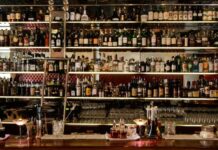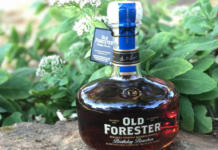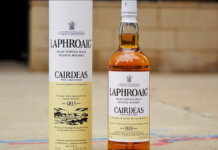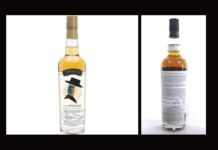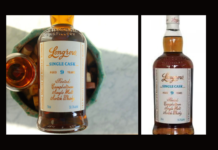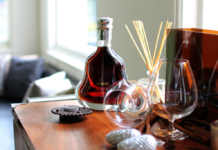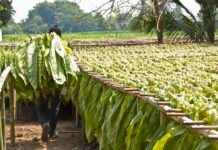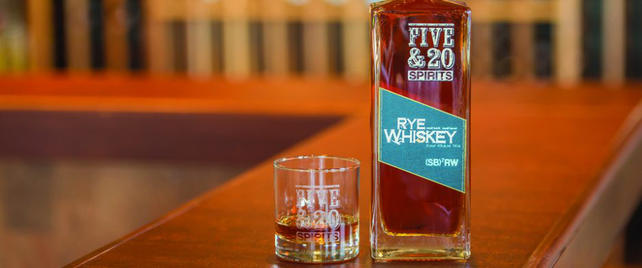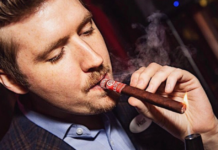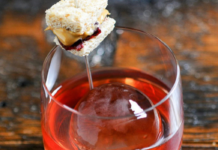For 40 years, Mazza’s main focus has been creating Lake Erie wines of distinction, beginning with Mazza Vineyards in North East, PA. In 2005, we began a small craft-distilling operation in our Mayville Mazza Chautauqua location, crafting Eau de Vie (fruit brandy), grappa, and spirits for our fortified wines. Demand for distilled products grew, as did our thirst for offering our customers new products to enjoy, and the expansion of our distillery became an obvious next step.
We expanded our distillery in 2015 into a combination distillery/brewery. With this expansion, we’ve become a unique location, NY state’s first combination winery, distillery and brewery. Following the model of our wineries and our distillery, we’re again working with local farmers to utilize local agricultural products in our beers. Prepared with local ingredients, brewed in small batches, and purposefully unfiltered to preserve flavor, you’ll see that our Five & 20 Brewing craft beers are on par with the quality you’ve come to know from the Mazza and Five & 20 names.
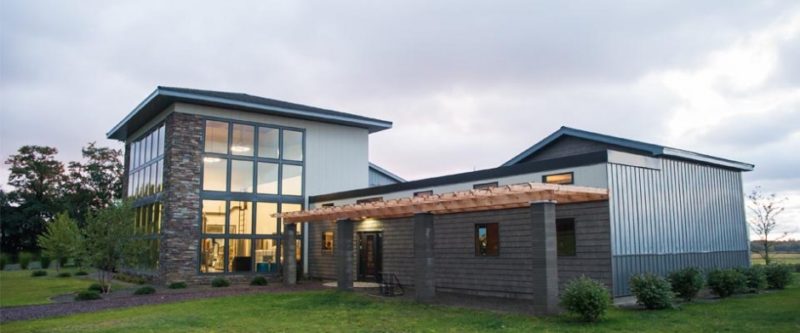 Mario and Joe tell us about yourselves. What were your career history before getting into this business? What was the vision for Five and 20 Spirits? What made you want to expand from wines? Mario what is your role and what does your day look like?
Mario and Joe tell us about yourselves. What were your career history before getting into this business? What was the vision for Five and 20 Spirits? What made you want to expand from wines? Mario what is your role and what does your day look like?
MM: I came from a winemaking family, but chose initially to pursue an interest in science and engineering and obtained a degree in chemical engineering and worked briefly in that industry before deciding to come back into the wine business. I obtained my masters in oenology at the University of Adelaide and worked in the Australian wine industry before coming back to the family business in 2005 – following my father’s advice to make mistakes with other people’s money first! While I was away, I had some exposure to distillation of beverage spirits thanks to the still at the university’s winery and an advisor’s interest in whiskey.
The idea for our own distillery only came about in a passing conversation with my father while I was still overseas – we were planning a new winery in western NY and he suggested putting a small still in as part of the facility since new laws had be passed (this was in 2004). I liked the idea of being able to distill something I could drink (and that wouldn’t kill me compared to what I made at DuPont). I thought he was joking, but a month later we had land and a still on order from CARL in Germany. Distillation was really just an ancillary thing for the first few years – making grappa, eau de vie, fortification spirit and only running the still once a week or so. Only after a bit more time did we realize the potential and with that, built a new facility in Westfield NY starting in late 2012 and rebranded it as Five & 20 Spirits.
The vision has been to create spirits that are of interest to us using locally grown and sourced ingredients – much like we have with wines for nearly five decades.
The expansion from wines to spirits (and more recently to beer) was a logical extension in some way; we started making fruit and wine based spirits, and then with some skill in distillation, extended that to grain based spirits. And with grains in the mix, the extension to brewing wasn’t too far off. Tourism is a key component of our business and being able to offer all three product lines in a single tasting room puts us in a unique spot and offers our guests an option no matter their preference (wine, spirits or beer).
I don’t know that I have a typical day anymore. I spent a lot of time supporting my staff and working to develop their skills – I can’t do all that needs to be done, so I need to focus my time and efforts on hiring, training and empowering those that work with us to do the best they can. That being said, I still make sure to have an active part in overall planning for all of our operations and taste every product prior to release.
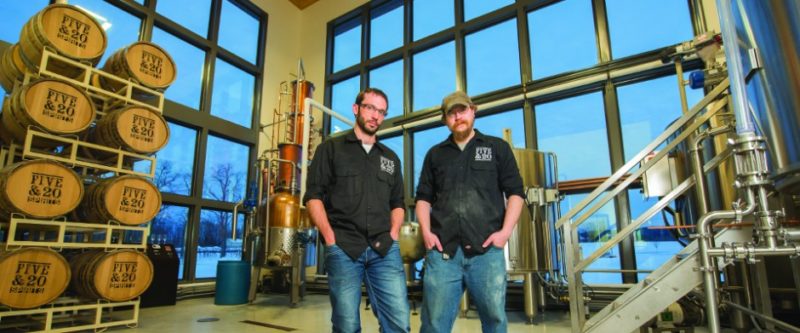 Joe, what skills or attributes do you believe a great master distiller possesses?
Joe, what skills or attributes do you believe a great master distiller possesses?
JN: The term Master distiller applies to those people who are exemplary in the field. A lot of people throw that term around these days. I have been called a Master distiller, though I don’t believe I’m there yet. A true master of any craft should set a standard for proficiency in all aspects of their craft. A deep understanding of everything from mash bill creation, barrel selection, distillation techniques, blending, etc. is a necessity.
Does the geographic location and the climate affect the maturation process of your whiskey?
MM: There is definitely some effect – there is some climate control in the barrel house, but it does allow for some (dampened) seasonal variation. Honestly I don’t know that we have enough time and data to be able to say how exactly at this point.
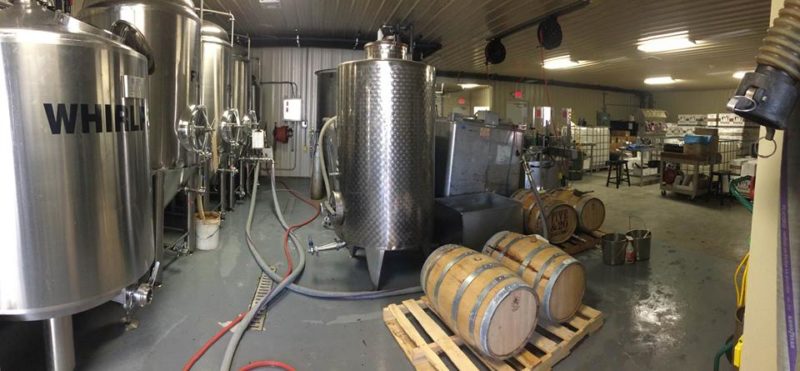 What type of whiskey do you currently produce and how are they different?
What type of whiskey do you currently produce and how are they different?
JN: Rye whiskey, bourbon and white versions of rye and corn.
The aged whiskeys differ from their white counterparts significantly, and not just because of the inherent differences between aged and “unaged” spirits. The white spirits are distilled specifically to select the most flavorful spirit that captures the essential flavors of the base grains used. The distillation process is tailored to refine and enhance those flavors.
What are you guys currently doing to stand out in this highly saturated craft whiskey market?
MM: We’ve had the good fortune to grow slowly and without the pressure of outside investment. It’s allowed us to hone our product and leverage our experience in winemaking and blending. As we continue to build our brand, we have a unique opportunity of internally collaborating between wine, beer and spirits to create unique products or share ingredients, barrels, etc. with more control than if they were coming from an outside source.
Let’s get personal. Do you remember your first drams? Maybe there is an interesting story behind that.
JN: My grandfather was a big fan of Jim Beam. I cut my teeth on small sips from old, scratched glasses filled from dusty bottles after a day of work in the wood shop or the garden.
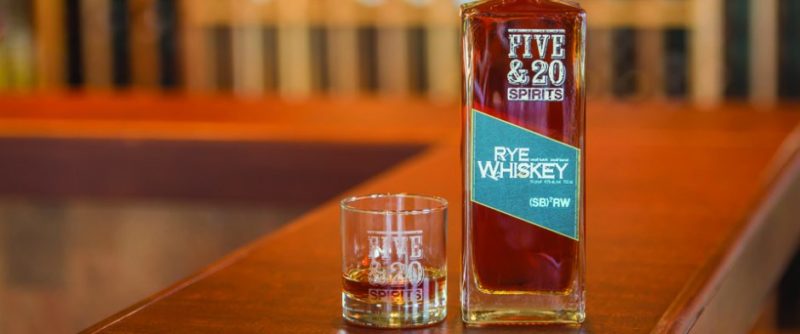 Do you feel now is the most exciting time to be a whiskey lover?
Do you feel now is the most exciting time to be a whiskey lover?
JN: Other than being able to travel back to the time before Prohibition, yes. Though I would have liked to sample all the local and regional offerings that were available then.
What is your opinion on barrel entry proof, and are there special considerations that you are applying to your barrel selection (Stave thickness, cooperage choice, seasoning time, etc).
JN: Entry proof should be tailored to fit the barrel size and desired flavor profile of the finished product. It’s a balance between the extraction of barrel flavors and the true maturation of the spirit as it interacts with the barrel and the outside air.
Personally, I prefer barrels that are toasted before the charring process. There’s a depth of flavor that the toasting imparts which is great.
Where do you see your distillery in 5/10 years?
MM: We’re looking to continue to grow and provide enjoyable products and educations and entertaining experience for those that visit the facility. One project we are extremely excited about is demonstrating sustainability through our joint venture with Timberfish. We are using our spent grain and stillage as the basis for a unique aquaculture system that turns our distillery (as well as winery and brewery) by-products into a nutrient stream to farm raise fish on site – creating a great value added product and addressing a waste stream issue all at the same time.
For More Information on the Distillery Please visit the following links:
website: http://www.fiveand20.com
facebook: https://www.facebook.com/fiveand20


